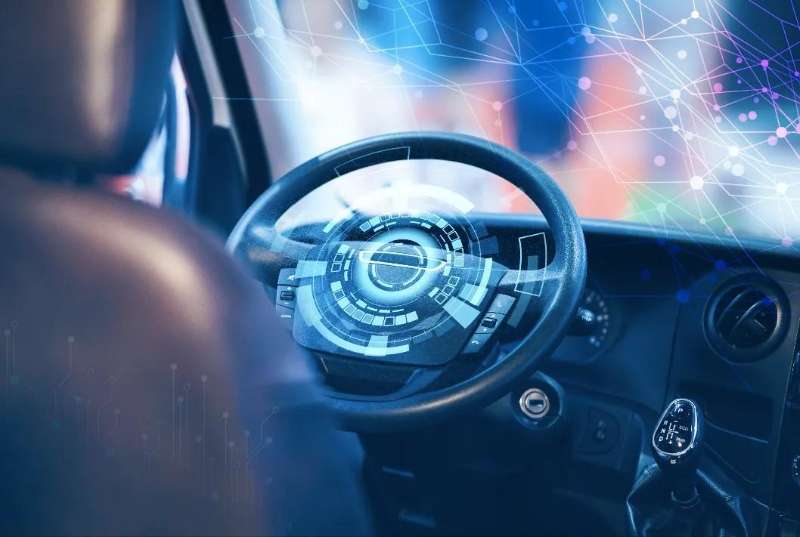Progress in the Commercialization of Unmanned Vehicles

On July 23, the Robotaxi (driverless taxi) industry has entered the stage of full-vehicle unmanned commercial operation of the pilot stage: from road testing to demonstration operation within designated areas, from having safety drivers in the front seat to some cities achieving no safety drivers on the ground, from free trials to commercial operation.
According to the “Automated Driving Levels” released by the National Automotive Standardization Technical Committee, driving automation is divided into 6 levels. Among them, L0 to L2 are driving assistance, and the driver needs to monitor the entire driving process; L3 is conditional autonomous driving, and the driver takes over in emergencies; L4 is high-level autonomous driving; L5 is fully autonomous driving.
According to the Economic Observer, as of now, Pony.ai can provide both driver-assisted or driverless travel services in Guangzhou’s Nansha district. Pony.ai said that all judgments and calculations, from recognizing road conditions to decision-making, to giving brake and accelerator commands, are completed by the Pony.ai L4-level automatic driving hardware and software installed in the unmanned vehicle.
How does Pony.ai use technology to ensure the safety of driverless cars? Mr. Mo Luyi said that so far, they have completed 35 million kilometers of testing on public roads. In contrast, an average human driver, aside from professional drivers, may not even reach 350,000 kilometers of driving in a lifetime. So, the testing done by Pony.ai is equivalent to a human driver driving for 100 years. “You can imagine all the extreme scenarios on the road, which we call ‘corner case’ in our industry, and we have experienced them all,” said a spokesperson for Pony.ai.
In addition, Pony.ai has a redundant chassis system designed for L4 autonomous driving, with safety redundancy in both horizontal and vertical control of the vehicle chassis. They have implemented multiple layers of safety design at the autonomous driving system level, including a main system that can achieve full functional autonomous driving and meet the L4 level Robotaxi requirements; on top of that, there are two layers of safety protection schemes, where independent subsystems can achieve safe parking on the side of the road and safe parking within the lane when the main system is in danger or has a rare failure.
However, unlike the “Chuangniu Auto Robotaxi Intelligent Control Center” that has been rumored online, Pony.ai tries to minimize human intervention in daily work processes as much as possible. For example, a Pony.ai staff member told Caixin Media that in the case of the Guangzhou operation center, the company’s back-end dispatch center is not a physical space, and the remote assistance specialists do not need to work in a concentrated office. They are more like programmers, “who can operate from their computer screens.” For solutions such as “remote driving” and “remote chauffeur,” Pony.ai believes that remote control of vehicles at the control level can actually increase the risk of vehicle operation if there is a delay or unstable signal. This is not advisable.
For example, in Guangzhou, a Robotaxi needs to obtain different stage permits in policy before it can be charged for commercial use. Each stage requires the vehicle to meet certain requirements in terms of operating mileage, emergency response, safety redundancy design, etc. In the increasingly strict regulatory environment, special attention should be paid to compliance issues such as data compliance and privacy protection, safety standards and accident liability, road testing and commercial operation, technical standards and certification, and policy communication and compliance guidance.
At present, Pony.ai mainly involves three business segments of Robotaxi, Robotruck (automated driving truck), and passenger car intelligent driving assistance. The company plans to complete the technological breakthrough and commercialization within 5 to 10 years. Among them, in the Robotaxi field, it is expected that by 2025, it can truly mass-produce and hit the road, allowing all ordinary people to experience the future of travel; in the Robotruck field, there are currently Robotrucks traveling back and forth between Beijing and Tianjin for cargo transportation, with strong cargo demand. The Xiaomai autonomous driving truck has completed the transition from a demo to technical validation, to a small-scale commercial operation with a safety driver, and the next stage it needs to break through is fully autonomous operation.
In terms of global scale, the commercialization of Robotaxi is divided into several tiers based on differences in policies, funding, autonomous driving technology development levels, and the verification of commercial logic in different countries. For example, in 2023, the progress in China and the United States is relatively fast, and commercial operations without a driver have been launched in designated areas; Germany, France, and the United Arab Emirates have launched small-scale commercial pilot operations with a driver; the UK, Saudi Arabia and other countries and regions are still mainly focused on road testing.

熱門頭條新聞
- ENEMY INCOMING! BASE-BUILDER TOWER DEFENSE TITLE ‘BLOCK FORTRESS 2’ ANNOUNCED FOR STEAM
- Millions of Germans look forward to Christmas events in games
- Enter A New Era of Urban Open World RPG with ANANTA
- How will multimodal AI change the world?
- Moana 2
- AI in the Workplace
- Challenging Amazon: Walmart’s Vision for the Future of Subscription Streaming
- LAUNCH OF AN UNPRECEDENTED ALLIANCE BETWEEN EUROPEAN FILM AND AUDIOVISUAL MARKETS
